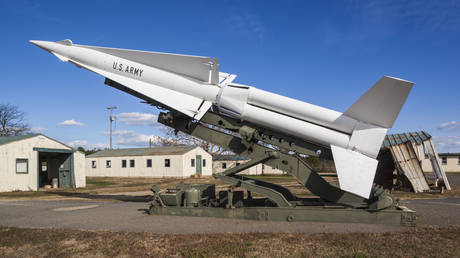ARTICLE AD BOX
OpenAI has set in motion a $300 billion hardware expansion that binds its chip suppliers, financiers, and energy providers into a single feedback loop.
The company has locked in multi-year agreements with AMD and Broadcom to deliver tens of millions of AI accelerators between 2026 and 2029, deals that together represent roughly 16 gigawatts of new compute power, enough to rival the entire electricity use of some small nations.
AMD will supply 6 gigawatts of Instinct GPUs and has granted OpenAI equity warrants tied to performance milestones, while Broadcom will co-design and deploy 10 gigawatts of custom silicon and rack systems over the same period.
Those contracts sit atop the Stargate build-out with Oracle and SoftBank, a five-site U.S. expansion referencing more than $300 billion in cumulative spend, the backbone of what may be the largest privately financed infrastructure project in tech history.
Circular AI economy
The structure of these agreements points to a circular economy pattern in AI infrastructure where capital, equity incentives and purchase obligations interlock across vendors, infrastructure providers and model operators.
The AMD arrangement links future GPU deliveries to milestone-based warrants that give OpenAI upside exposure to AMD’s equity performance, creating a feedback loop between a supplier’s valuation and a customer’s capacity expansion path.
In parallel, Nvidia disclosed about a 7 percent stake in CoreWeave earlier this year while CoreWeave expanded its agreements with OpenAI by $6.5 billion, bringing total 2025 contract value to roughly $22.4 billion, which ties a chip vendor’s equity, an infrastructure lessor’s revenue and OpenAI’s compute consumption in the same chain.
Bloomberg also reported on vendor-financing loops involving Nvidia commitments up to $100 billion connected to chip purchases by OpenAI, framing the optics of demand that is partly financed by the supplier itself.
A forward-looking view turns on three execution gates: utilization, energy, and cost curves. On utilization, announced capacity ramps from AMD, Broadcom, and Stargate total well into the double-digit gigawatt range through 2029, while enterprise AI revenue must scale to keep cluster occupancy above threshold levels that support attractive returns.
BofA’s October survey registered 54 percent of fund managers calling AI a bubble and cash balances near 3.8 percent, a setup that can amplify market-wide swings if deployment lags the delivery schedule.
Index concentration adds another macro channel, as the “Magnificent Seven” hovered near one third of S&P 500 market cap by mid-2025, which tightens passive portfolio sensitivity to AI news flow and capex guidance changes.
AI energy needs
On energy, grid availability and delivered cost per megawatt-hour shape the feasible pace of model scaling.
Goldman Sachs projects global data center electricity demand rising about 165 percent by 2030 compared to 2023. This trajectory will push data center operators toward long-term power purchase agreements, on-site generation, and siting shifts as new clusters come online in 2026–2029.
McKinsey coverage cited across trade press places the U.S. trajectory at roughly 25 percent compound growth to 2030, with U.S. data centers potentially consuming more than 14 percent of national electricity by decade-end, which raises planning risk if interconnection queues and permitting timelines stretch relative to hardware deliveries.
The regulatory lane remains fluid, although the UK Competition and Markets Authority concluded in March 2025 that Microsoft’s partnership with OpenAI did not qualify for a merger investigation, a baseline that may be revisited if new equity-linked supply arrangements intensify market power concerns around access and pricing.
Custom silicon is the cost lever to watch as Broadcom’s program moves from design to deployment.
If the accelerator, networking and rack co-design work delivers material performance per watt gains, inference cost of goods and training efficiency can reset the unit economics of the circular model toward self-funding cash flows as utilization builds.
Execution risk sits with toolchains, packaging and memory bandwidth, and the timeline begins in 2H26 with a multi-year ramp through 2029, so financial outcomes for vendors and operators will track the speed at which those gains appear in audited margins and contract pricing.
The immediate map of commitments is clear, and the conversion of framework deals into firm purchase orders, disclosed in vendor filings and press updates, is a near-term checkpoint.
CoreWeave’s financing and deal flow, including any corporate actions and the evolution of Nvidia’s ownership, will show how tight the loop becomes between supplier equity, infra capacity and OpenAI’s demand pathway.
Apple’s system-level integrations widened consumer surface area in 2024 with privacy terms that state requests are not stored by OpenAI and IP addresses are obscured, which provides a counterpoint to enterprise adoption cycles that tend to move on compliance and ROI milestones rather than device reach alone.
The question for portfolio and treasury planning is how the announced gigawatts match realized workload growth, regional power deliverability and the cost trajectory through 2028. A practical way to track the shift from circular to sustainable is to pair data-center utilization metrics with energy contract coverage ratios and the mix of revenue from usage-linked enterprise agreements.
If those measures improve as 2H26 deployments begin, the financing loops embedded in these deals function as bridge capital to a steadier compute economy rather than as a source of correlation risk across vendors, infra providers, and the lab.
| 6 GW | AMD | 2H26 | N/A | Milestone-based warrants up to 160M AMD shares, OpenAI beneficiary |
| 10 GW | Broadcom | 2H26 | End-2029 | Custom accelerators and racks co-designed with OpenAI |
| 4.5–5.5 GW | Oracle, SoftBank | Phased | N/A | Five new U.S. Stargate sites, partnership language above $300B over five years |
The forward path concentrates into a 24 to 36-month window when the first Broadcom systems and AMD waves come online, power contracts finalize at Stargate sites, and revenue-backed consumption ramps through enterprise channels. OpenAI says the Broadcom rollout finishes by the end of 2029.
The post OpenAI builds $300B bubble machine: The feedback loop rewiring Wall Street finance appeared first on CryptoSlate.
.png)
 3 hours ago
2
3 hours ago
2








 English (US)
English (US)